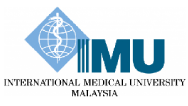Facilitation of web-based internet PBL: What is an adequate group size?
Authors: Masayuki Niwa, Satoshi Yoshida, Kazuhiro Takamizawa, Satoshi Nagaoka, Nobumitsu Kawakubo, Yuzo Takahashi, Yasuyuki Suzuki.
ABSTRACT
Background: Development in internet technology enables e-learning at the higher education level. We have developed the Internet PBL-Tutorial System/Rakuichi that allows multi-directional communication among participants with web-based bulletin boards. Although this system has been successful in medical education at the undergraduate level, we sought to encourage “readonly members” to participate more fully in the program.
Methods: To this end, we compared the posting frequency among three strategies: (1) students and tutors had an off-site meeting to promote face-to-face communication during the course, (2) several classes were allowed to watch the discussion in other classes in the second half of the course, (3) three classes (5 – 6 students each) in one topic were combined into one class (16 students) in the second half.
Results: No meaningful effects were observed for strategies (1) or (2). However, the posting frequency increased 50 % for strategy (3).
Conclusion: Facilitation of communication among participants was achieved by increasing the number of student participants. We predicted that an optimal number of students in each class in internet-based PBL would be ~20 people.
Keywords: Web-based, PBL-tutorial, master course, facilitation, education method, group size.
Citation: IeJSME 2014 8(2): 4-11

